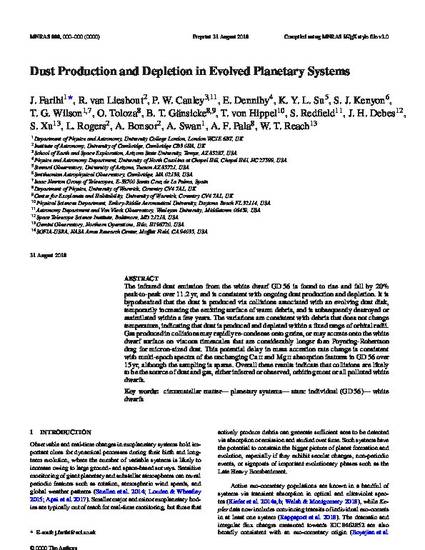
The infrared dust emission from the white dwarf GD 56 is found to rise and fall by 20 per cent peak-to-peak over 11.2 yr, and is consistent with ongoing dust production and depletion. It is hypothesized that the dust is produced via collisions associated with an evolving dust disc, temporarily increasing the emitting surface of warm debris, and is subsequently destroyed or assimilated within a few years. The variations are consistent with debris that does not change temperature, indicating that dust is produced and depleted within a fixed range of orbital radii. Gas produced in collisions may rapidly re-condense onto grains, or may accrete onto the white dwarf surface on viscous timescales that are considerably longer than Poynting–Robertson drag for micron-sized dust. This potential delay in mass accretion rate change is consistent with multi-epoch spectra of the unchanging Ca II and Mg II absorption features in GD 56 over 15 yr, although the sampling is sparse. Overall, these results indicate that collisions are likely to be the source of dust and gas, either inferred or observed, orbiting most or all polluted white dwarfs.
Available at: http://works.bepress.com/ted-vonhippel/50/